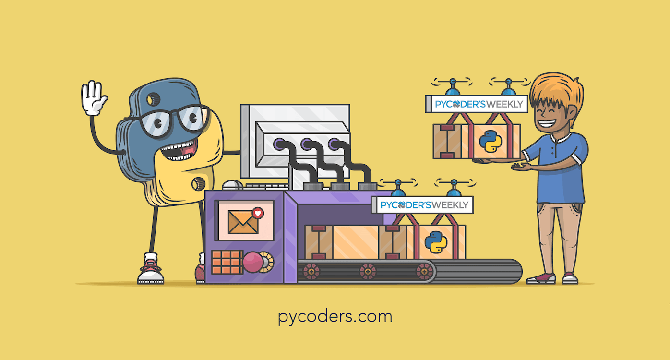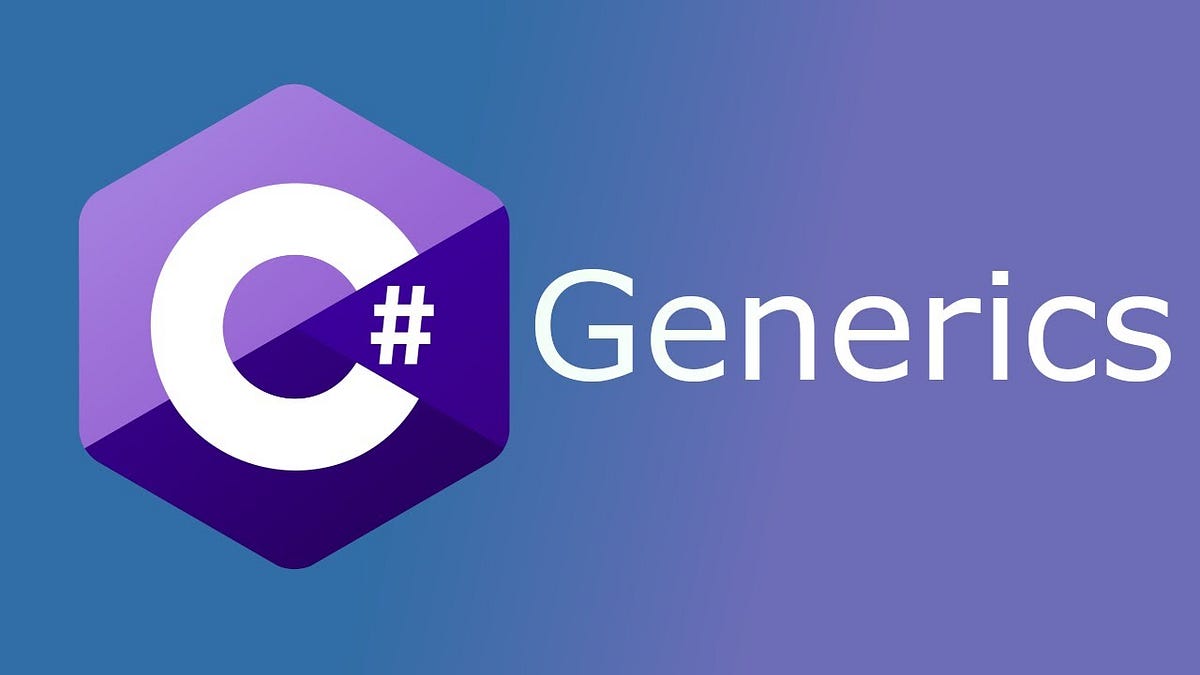Programming News
PlanetPython
428

Image Credit: PlanetPython
PyCoder���s Weekly: Issue #682: pylock.toml, NumPy, t-strings, and More (May 20, 2025)
- Python Core Developer Brett Cannon discusses PEP 751 and pylock.toml for project reproducibility.
- An opinion piece highlights challenges with NumPy as dimensions increase.
- PEP 750 introduces t-strings similar to f-strings in Python 3.14.
- A guide on securing Django sites, including HTTPS, database security, and built-in features.
- Talk Python covers the upcoming t-string feature with interviews from experts.
- An article explains an N-body simulation gravity problem-solving approach.
- Insights on PySide6 @Slot decorator for working with Qt slots and signals.
- Learn about automating lip syncing with Wav2Lip for clear messaging.
- Real Python offers tips on handling missing data in Polars for data analysis.
- Summary of Python package and code projects like pytest-benchmark and param.
- Upcoming events include Real Python Q&A, PyCon Italia 2025, and more.
- PEP history and complex system problem-solving insights are outlined in various articles.
- Projects feature math animation, FTP server library, and a fast Python type checker.
- Django ORM object loading bug exploration and examination of Python complexities.
- Creating real-time analytics dashboards with Flask and Svelte.
- Understand the significance of the free-threaded build of CPython and its progress.
- Google employee shares lessons on working with complex systems.
- Various Python events like PyLadies Amsterdam and PyCon Italia are scheduled.
- PyCoder’s Weekly Issue #682 covers a wide array of Python-related topics.
- Subscribe to PyCoder’s Weekly for regular updates on Python news and tutorials.
Read Full Article
25 Likes
Dev
99

Image Credit: Dev
10 Practical Lessons Every Laravel Developer Should Know
- Start validation from the HTML to avoid unnecessary requests to the server.
- Always validate incoming data and avoid using request()->all().
- Utilize resource or apiResource routes to keep route files organized.
- Avoid putting logic inside Laravel Resources to prevent performance issues and maintain code clarity.
- Eager load relationships to prevent N+1 problems and utilize caching for frequently accessed data.
- Monitor your work using Laravel Logs and tools like Laravel Telescope.
- Enforce Authorization using Guards, Policies, or Gates to protect data.
- Enable Throttling / Rate Limiting to prevent system overload from excessive requests.
- Regularly clean up old data like logs and unused files to save disk space.
- Use caching wisely for improved performance on frequently accessed data.
Read Full Article
5 Likes
Dev
216

Image Credit: Dev
10 Secret Angular Tricks for Better Performance and Cleaner Code
- Angular offers 10 hidden techniques to boost productivity and application performance.
- Techniques include lazy loading modules, trackBy in *ngFor, OnPush change detection strategy, RxJS fromEvent, ComponentFactoryResolver, NgZone optimization, custom pure pipes, providedIn: 'root' for services, NgTemplateOutlet, and using resolvers for pre-fetching data.
- These techniques help in writing cleaner, more efficient code and improving application performance.
- Angular developers can experiment with these techniques to enhance their projects and achieve better performance and code quality.
Read Full Article
13 Likes
Dev
351

Image Credit: Dev
Document Search in .NET with Kernel Memory
- Kernel Memory is a library for document indexing, web scraping, and question answering in .NET.
- It allows for indexing information from various sources and provides search and question answering capabilities.
- Using Kernel Memory involves a builder API, importing documents, and asking questions to an LLM.
- It supports various vector storage solutions and LLMs like OpenAI, Anthropic, and more.
- The library enables local hosting of LLMs and on-network data storage.
- A C# demo application is explored, showcasing the creation of a Kernel Memory instance.
- Configuration settings are read from appsettings.json and used in creating the memory instance.
- Kernel Memory supports importing data from raw strings, web pages, and various document formats.
- Search and question answering can be performed using SearchAsync and AskAsync methods.
- Kernel Memory extensions allow for customization and integration with other systems like Semantic Kernel.
Read Full Article
21 Likes
Discover more
- Software News
- Web Design
- Devops News
- Open Source News
- Databases
- Cloud News
- Product Management News
- Operating Systems News
- Agile Methodology News
- Computer Engineering
- Startup News
- Cryptocurrency News
- Technology News
- Blockchain News
- Data Science News
- AR News
- Apple News
- Cyber Security News
- Leadership News
- Gaming News
- Automobiles News
Medium
374

Image Credit: Medium
Understanding Generics in C#: A Step-by-Step Journey With Real-World Examples
- Generics in C# are essential for building APIs, data structures, and implementing design patterns.
- They allow writing code that is strongly typed, reducing duplication, and improving performance.
- Generics enhance type safety and provide accurate code suggestions and checks by letting the compiler know the type.
- Generic type constraints in C# help ensure type parameters meet specific requirements, enhancing type safety and flexibility in generic programming.
Read Full Article
22 Likes
Towards Data Science
262

Optimizing Multi-Objective Problems with Desirability Functions
- When working in Data Science, problems with competing objectives often need to balance several metrics to achieve the best outcome.
- Desirability functions offer an elegant solution to multi-objective optimization by combining metrics into standardized scores.
- The article explores the mathematical foundation, implementation in Python, and optimization of multi-objective problems using desirability functions.
- Three types of desirability functions are discussed: Smaller-is-better, Larger-is-better, and Target-is-best.
- Individual desirability scores are combined using the geometric mean, with weights reflecting metric importance.
- A practical optimization example of bread baking is used to demonstrate desirability functions in action.
- Mapping parameters to quality metrics and defining how parameters influence quality metrics are essential steps in optimizing with desirability functions.
- The article discusses computing flavor profile, texture quality, and practicality, and defining the objective function for optimization.
- Optimization using SciPy's minimize function and visualizing results with varying preference weights are presented.
- Desirability functions can be applied across various domains, offering a systematic approach for tackling multi-objective optimization problems.
Read Full Article
14 Likes
Dev
207

Image Credit: Dev
JavaScript's Building Blocks: A Beginner's Guide to Data Types
- JavaScript data types are crucial as they determine how information is stored and managed.
- Data types specify the type of value a variable can hold and the operations that can be applied.
- JavaScript is dynamically typed, automatically determining variable data types based on assigned values.
- Primitive data types in JavaScript are immutable and include String, Number, Boolean, Null, Undefined, BigInt, and Symbol.
- String data type represents textual data, while Number covers numerical values, including special values like Infinity and NaN.
- Boolean holds true or false values, Null represents intentional absence of value, and Undefined indicates variables declared but not assigned.
- BigInt is used for large integers, and Symbol provides unique and immutable values for avoiding naming collisions.
- The typeof operator helps determine the data type of variables or values in JavaScript.
- Understanding data types is crucial for correct operations, efficiency, bug prevention, and code readability.
- JavaScript also has Object data type, including Arrays, Functions, and regular Objects, for handling complex data structures.
Read Full Article
12 Likes
Medium
18

Master DSA: Your Guide to Success
- Data Structures and Algorithms (DSA) are fundamental in programming, serving as the backbone for software solutions.
- Data Structures organize and store data, while Algorithms provide step-by-step approaches to problem-solving.
- To excel in DSA, immerse yourself in learning the fundamentals, practice coding challenges, and integrate concepts into real-world scenarios.
- Continuous learning, engagement with coding communities, and a resilient mindset are essential for mastering DSA and achieving success in programming.
Read Full Article
1 Like
Dev
202

Image Credit: Dev
History Java
- Java, originating from Sun Microsystems in the 1990s, was initially intended for interactive television but found success on the internet due to its portability and versatility.
- Developed by James Gosling and team, Java aimed to be simpler than C++, robust, secure, portable, and object-oriented, leading to the birth of the language 'Oak', later rebranded as Java in 1995.
- Java's bytecode, generated by the compiler from Java code, allows for the 'Write Once, Run Anywhere' capability by being interpreted by the Java Virtual Machine (JVM) specific to each operating system.
- The JVM simulates a computer within the actual computer, enabling the execution of Java programs on various platforms through bytecode interpretation or just-in-time compilation.
- Java's features include garbage collection for memory management, security measures to restrict code operations, and a vast standard library for common tasks, enhancing developer productivity and efficiency.
- The JVM-based compilation model has contributed to Java's widespread adoption in enterprise systems, mobile apps, and various devices, showcasing its enduring relevance in the tech industry.
- Java's evolution, marked by the transition from Oak to Java and the pivotal role of JVM and bytecode, exemplifies its remarkable journey from a niche programming language to a global powerhouse.
- The Java language's influence spans from critical financial systems to Android applications, underlining its significance in modern software development.
- Java's compilation to bytecode and subsequent interpretation on the JVM has been pivotal in its success, enabling it to run on billions of devices and maintain its prominence in the programming landscape.
- From its origins in reinventing interactive TV to its widespread use across diverse platforms, Java's legacy continues to shape the digital world, making it a fundamental language for developers worldwide.
Read Full Article
12 Likes
Medium
94

Image Credit: Medium
How Top Level Await Works in JavaScript
- Top-level await in JavaScript only works in ES modules, not in regular scripts, and requires parsing as an ES module in browsers or using .mjs extension or 'type': 'module' in Node.js.
- If await is used outside an async function in a classic script, a syntax error occurs immediately.
- Module execution pauses for top-level await until the awaited promise settles, affecting the entire module's execution and any importing modules.
- The module system adds an execution barrier for top-level await, causing a delay in the import process until the awaited value is resolved.
- Top-level await changes module loading process by introducing asynchronous pauses without wrapping everything in a function.
- Circular dependencies with top-level await are more strictly managed in modern runtimes to prevent unresolved deadlocks.
- To avoid issues with top-level await and circular dependencies, it's crucial to consider the order of operations and isolate async work inside exported functions.
- Engine splits module loading into parsing, setup, and execution phases, holding execution when encountering a top-level await to maintain consistency.
- Top-level await provides a more natural coding order but introduces an execution barrier until the awaited value is ready.
- Modern JavaScript modules behave with timing constraints due to top-level await, affecting the flow of execution and module imports.
Read Full Article
5 Likes
Dev
202

Image Credit: Dev
Build a Streamlit App to Find the Closest CSS Color Name Using Python 🎨✨
- Build a Streamlit app to find the closest official CSS color name for any color chosen.
- Tools used include Streamlit, matplotlib, and Python standard library.
- The app converts selected colors to RGB values, compares them to CSS4 colors, and displays the closest match.
- Future enhancements may include image upload for dominant colors, showing top 5 closest CSS colors, and color harmony suggestions.
Read Full Article
12 Likes
Perl
49

Testing distributions for potentially malicious Unicode
- Test::MixedScripts is a Perl module inspired by Daniel Stenberg's article on detecting malicious Unicode.
- It helps in testing Perl source code and other text files for unexpected Unicode scripts that could be potentially malicious.
- The module detects Unicode characters in different scripts that may look similar but have different meanings, which can be exploited by malicious individuals.
- It allows easy testing for Latin, Common, Cyrillic, and other scripts in codebases to prevent confusion or security vulnerabilities.
Read Full Article
2 Likes
VentureBeat
351

Image Credit: VentureBeat
Google’s Jules aims to out-code Codex in battle for the AI developer stack
- Google has released Jules, an autonomous coding agent that helps developers fix bugs, create tests, and consult documentation.
- Jules will be integrated into GitHub and uses Google’s Gemini 2.5 Pro in the public beta phase with usage limits.
- Google's Jules competes against OpenAI's Codex, another coding agent that can write, fix bugs, and answer codebase questions.
- The growth of AI-powered coding platforms leads to an emerging battleground among tech companies, with Google and OpenAI at the forefront.
Read Full Article
20 Likes
Googleblog
342

Image Credit: Googleblog
On-device GenAI APIs as part of ML Kit help you easily build with Gemini Nano
- A set of on-device GenAI APIs, part of ML Kit, is introduced to integrate Gemini Nano in Android apps with 4 new APIs: Summarization, Proofreading, Rewriting, and Image Description.
- GenAI APIs offer easy integration, run on-device, and ensure functionality without the need for a reliable internet connection, with safety protection features added.
- The APIs are built using components like Gemini Nano as the base model, API-specific LoRA adapter models, optimized inference parameters, and an evaluation pipeline for quality assurance.
- Quality evaluation of GenAI APIs shows improved benchmark scores compared to the Gemini Nano base model, with specific scores for different tasks like summarization, proofreading, rewriting, and image description.
- Sample usage of the GenAI Summarization API is demonstrated, emphasizing features like checking feature availability, downloading necessary features, and starting summarization requests.
- Guidance is provided on how to best use GenAI APIs for different tasks like summarization, proofreading, rewriting, and image description, considering factors like the length of content and desired outcomes.
- An example of an app, Envision, utilizing the GenAI Summarization API is mentioned, showcasing how concise summaries enhance user experience, especially for those who are blind or have low vision.
- Supported devices for GenAI APIs include Android devices using optimized platforms like MediaTek Dimensity, Qualcomm Snapdragon, and Google Tensor through AICore.
- To learn more and start implementing GenAI APIs, resources like official documentation, samples on GitHub, and guidance materials are available for developers.
Read Full Article
20 Likes
Dev
428

Image Credit: Dev
🚀 Leveraging the Power of AWS ECS to Deploy Flask Tic-Tac-Toe Game
- The article discusses deploying a Flask Tic-Tac-Toe game on AWS ECS using containers for a modern app deployment journey.
- Pre-requisites include having Flask, Docker, and AWS CLI installed and configured on your system.
- The process begins with building the game logic and backend using Flask and setting up the project structure.
- Frontend design with Tailwind CSS is implemented for the game interface to play the Tic-Tac-Toe game.
- The game can be run locally by using the 'flask run' command and accessing it via localhost.
- Containerizing the Flask app involves creating a Dockerfile, building the Docker image, and pushing it to AWS ECR.
- Deployment on AWS ECS is then executed by creating an ECS cluster, task definition, and service for the app to run live.
- Accessing the deployed app via the public IP is the final step to see the Flask Tic-Tac-Toe game running on AWS ECS with Fargate.
- The article concludes with a cleanup section on deleting AWS resources to avoid unexpected charges.
- Overall, the process involved building, containerizing, deploying, and accessing the Tic-Tac-Toe game on ECS as a complete DevOps deployment cycle.
Read Full Article
25 Likes
For uninterrupted reading, download the app